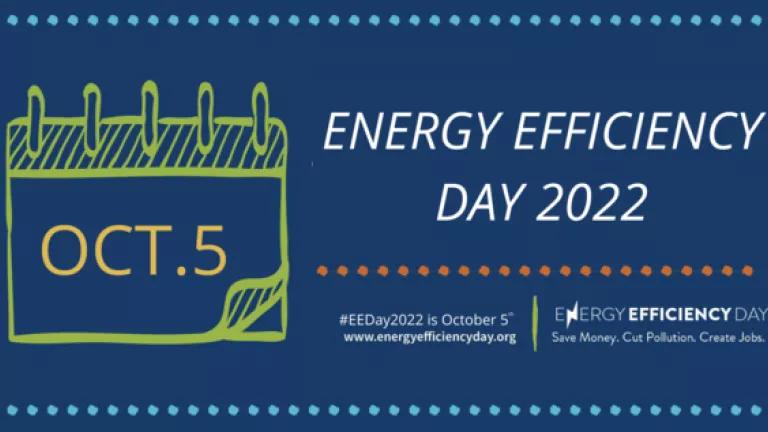DTE's Rate Case and Your Energy Bill

The Michigan Public Service Commission recently ordered significant cutbacks to a proposed rate increase by DTE. My previous blog provided an in depth introduction to rate cases broadly, but this blog will delve into what the DTE rate case specifically means to families’ monthly energy bills across Michigan.
Why It Matters
When we talk about rate cases, we’re talking about your energy bill. Put simply, rate cases are the behind the scenes work whose final product deeply impacts your monthly energy bill. If the process is done well it can reward you for not using a lot of energy and using more efficient appliances, but if done poorly can put the burden of bad investments on customers or shift costs improperly between customers.
Where the DTE Rate Case Shows Up on Your Bill
Every residential DTE customer’s electric bill looks something like this (minus the highlighting)…
… the bulk of these charges come directly from the outcomes of rate cases. Four items are highlighted that we will unpack.
Power Supply Charges
The power supply charge section reflects costs related to the creation of energy, so the fuel cost, the cost to generate the energy by using the fuel, and a cost to use the energy. The more expensive a power plant is and/or the more expensive operation and maintenance is, then the higher the power supply charges.

The Commission found that DTE failed to demonstrate that continued capital spending on a River Rouge coal unit was more beneficial than retiring that unit earlier. Based on this finding, they recommended eliminating over ten million dollars in past and future capital costs from what DTE had proposed. This means a lower total amount to be divided by customers that will be reflected in the “power supply charges” portion of your bill.
Equity Implications: Are we running uneconomic coal units?
Recently, DTE has been ordered by the Commission to perform more in depth economic analyses on their coal units which have provided much needed visibility. Consequently, it has been revealed that units may be operating beyond their cost-effective lives, meaning there are more affordable ways to provide power to customers. This leaves customers having to pay in more ways than one. First, families are asked to pay for uneconomic coal units in their monthly energy bills, but then they are also asked to pay in their air quality and health due to unnecessary coal pollution.
Delivery Charges
If the power supply charge section reflects the costs related to the creation of energy, then delivery charges not surprisingly reflect the costs related to delivering that energy to your home, business, or industrial facility.
Service charge

You’ll note that the service charge is one of the only numbers that is unaffected by how much energy you use. Everyone pays the same amount. It is also called a “fixed charge” because it is meant to reflect a fixed or essentially unchanging customer related cost. This can include the cost of the meter, overhead and underground wiring services, customer accounting costs, and customer service expenses. In the last four yearly rate cases, however, DTE has attempted to increase this number by adding additional expenses. Luckily the Commission denied them, so this number will remain the same on your bill.
Equity Implications: Are utilities trying to slip in inappropriate and burdensome costs?
For low-income and low-usage customers, this charge makes up a larger percentage and burden that no level of efficiency or conservation can lower. Particularly when we’re talking about the real scale DTE was looking at. In testimony, DTE went so far as to say their evidence supported residential fixed distribution costs of over $45 per customer per month, but in the “interest of gradualism,” they were proposing an increase from $7.50 to $9.00. That is more than some people’s entire monthly bill! That is why ensuring inappropriate costs are not included in this charge is an important component of equity and that is why we have fought against unsupported increases to them each year.
Distribution
A large portion of the rate increase that the Commission did find necessary and approved was related to the distribution system. The distribution system consists of the all the poles, wires, and related equipment branching throughout the state that allows energy to move freely from power plant to customer.

The Commission found that the distribution system was greatly in need of investment and noted that they were “deeply concerned that despite hearing a commitment from DTE Electric to improve and increase electric system maintenance programs, the utility’s best efforts have not met Commission expectations for safety and reliability.” As a result, they approved a large amount of spending in the coming years related to tree trimming in particular, but with new annual reports requiring better tracking of spending and metrics. As investment in the distribution system increases, so will the distribution portion of our electric bill.
Equity Implications: How is money being spent and where?
In this case, Commission Staff uncovered large amounts of overspending in some categories and underspending in others. There is a certain amount of flexibility given to accommodate for reality, but as the Commission Staff noted, if a utility over-spends its Commission authorization in a major category, like distribution, then they should justify this higher spending and Staff should not be surprised by over-spending as they were in this case. For customers paying for these increases, it is extremely important that we all have transparency and accountability for spending. What Commission Staff found was that money was being spent more on emergency and storm related issues rather than on strategic capital investment planned, essentially they were having to be more reactive than proactive.
Energy democracy organization, Soulardarity, also asked questions about where and who the investments and benefits are going to. If the majority of distribution spending is in areas that are economically improving, many low-income and people of color customers may be bearing the burden of increased rates, but not feeling the benefits. As the distribution system planning process continues and we see future rate cases with big distribution spending, transparency, accountability, and strategic planning will be more important than ever.
Distributed Generation Tariff
DTE’s proposed net metering replacement would have negatively affected customers with home solar in two big ways: first, by adding a new monthly fee for customers with solar installations; second, by sharply reducing how much a home solar system owner is compensated for the extra electricity their panels produce and send back onto the grid.
Luckily, and significantly, the Commission rejected the unsupported charge—a big win for solar customers across the state. They also rejected the amount DTE wanted to compensate customers for their excess energy, for a more reasonable one that better supports solar. As a result, customers with solar installations will not see a new charge on their bill and will instead see a larger bill credit for their excess energy than DTE's proposal would have allowed.
Equity Implications: Are we being locked into high bills?
For customers interested in clean energy and affordable bills, this rate case proposal was a one-two punch. First, DTE proposed rate increases, and then if you thought maybe you’ll just buy a solar installation and provide your own clean energy, they wanted to overcharge you and under-compensate you for your excess power. We need our utilities to be providing more options and better access to clean energy, not making it harder and trying to lock us into more costly bills.
Energy Waste Reduction Charge

The energy waste reduction (EWR) charge noted on your bill is a bit of a misrepresentation as the savings from energy efficiency far outweigh the costs. The Commission’s annual energy waste reduction report found that for every dollar spent on EWR programs in 2017, customers will realize benefits of $3.51. The benefits are felt by all customers, even those who do not participate in the programs, because the reduction in overall energy needed means that the overall costs are reduced as well—no need to build new, expensive power plants. There are additional indoor and outdoor air quality benefits and health benefits. Obviously, those who do participate in the programs will see the most benefits, so ask your utility what programs are available for you!
Equity Implications: Is everyone benefitting from EWR?
As I stated above, the quick answer is yes, but the more in depth answer is "yes, but." There are serious questions we need to ask about the amount of investment, savings, and even access distributed between different customer classes, but that takes place in the utility's energy waste reduction plans, not rate cases. So, keep an eye out for more in a forthcoming blog dedicated to EWR plans.
What Comes Next
NRDC, Michigan Environmental Council, and Sierra Club largely support the Commission’s recommendations as they importantly denied uneconomic coal spending, an increased fixed charge, and a monthly solar charge. Though much of the worst and unsupported increases were avoided, investment is still needed to ensure a safe and reliable electric system—and that will effect low-income communities more than others. That is why we must do everything we can to ensure energy is affordable and that everyone feels the benefits they are paying into. The work is not done. Especially because in a little over a month, DTE will be coming in for another rate case.
NRDC is a joint intervenor with Michigan Environmental Council and Sierra Club represented by Olson, Bzdok & Howard and Earthjustice.




